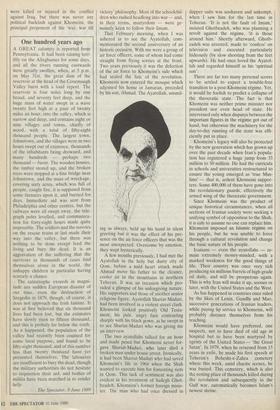One hundred years ago
A GREAT calamity is reported from Pennsylvania. It had been raining terr- ibly on the Alleghanies for some days, and all the rivers running eastwards were greatly swollen, when, at 5 p.m. on May 31st, the great dam of the reservoir at the head of the Conemaugh Valley burst with a loud report. The reservoir is four miles long by one broad, and seventy feet deep, and the huge mass of water swept in a wave twenty feet high at a pace of twenty miles an hour, into the valley, which is narrow and deep, and contains eight or nine villages and towns, chiefly of wood, with a total of fifty-eight thousand people. The largest town, Johnstown, and the villages were in two hours swept out of existence, thousands of the inhabitants being drowned, and many hundreds — perhaps two thousand — burnt. The wooden houses, the timber stored up, and the broken trees were stopped at a fine bridge near Johnstown, and the mass of wreckage, covering sixty acres, which was full of people, caught fire, it is supposed from some furnaces upon it, and burned for days. Immediate aid was sent from Philadelphia and other centres, but the railways were all swept away, the tele- graph poles levelled, and communica- tion for forty-eight hours made quite impossible. The soldiers and the navvies on the rescue trains at last made their way into the valley, but there was nothing to be done except feed the living and bury the dead. It is an aggravation of the suffering that the survivors in thousands of cases find themselves alone in the world, the unhappy children in particular having scarcely a chance.
The catastrophe exceeds in magni- tude any sudden European disaster of our time, even the destruction of Szegedin in 1879, though, of course, it does not approach the Irish famine. It was at first believed that six thousand lives had been lost, but the estimates have slowly risen to fifteen thousand, and this is probaly far below the truth. As it happened, the population of the valley had recently been counted for some local purpose, and found to be fifty-eight thousand, and of this number less than twenty thousand have yet presented themselves. The labourers are insufficient to bury the dead, though the military authorities do not hesitate to requisition their aid, and bodies of militia have been marched in to render help.
The Spectator, 8 June 1889


























































 Previous page
Previous page